“I’d like to go by climbing a birch tree,
And climb black branches up a snow-white trunk
Toward heaven, till the tree could bear no more,
But dipped its top and set me down again.That would be good both going and coming back.
One could do worse than be a swinger of birches.”
-Robert Frost
If the poem isn’t telling, this article will be covering birch trees. Most specifically, the medicinal benefits of paper birch.
It should be recognized that there are many other species of birch in addition to paper birch, and all contain the same medicinal properties.
What Is Paper Birch?
Paper birch (Betula papyrifera) ranges from across Alaska and Canada into the northern contiguous United States. This tree is most often associated with short, cool summers and long, cold winters.
Paper Birch Appearance
Most who are familiar with paper birch know it by its striking white bark that curls and peels with the seasons. Paper birch bark has been used for centuries as a tool from shingling roofs, creating baby cradles and moose calls, to being used (as the name implies) for paper. Personally, I like to peel the bark and write friend letters on it.
Paper birch most often grows in continuous stands and are rigorous in growth, resprouting from cut stumps again and again. They are generally considered short-lived for a tree, as a 100-year-old birch is considered an elder.
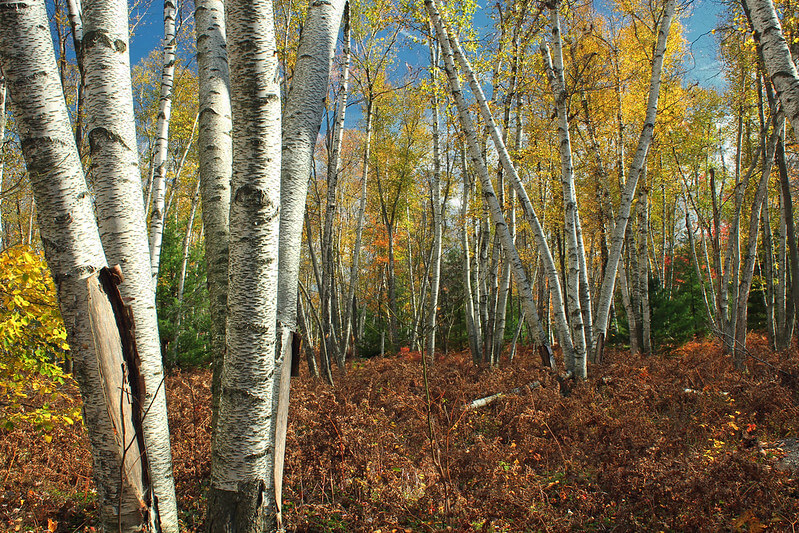
This tree grows straight and tall or spindly and bent. It blends its white bark in with the snow. The leaves are generally triangle-shaped with serrated margins that taper the tip of the leaf rather sharply.
Being a deciduous tree, the leaves drop in cold weather due to hormonal shifts that are triggered from shorter days and longer nights. Abscisic acid, one of the hormones that initiates dormancy in the tree, counteracts any growth hormones and triggers ethylene. The combination of these forces causes the physiological change that walls off the base of the leaf petiole from the branch. This inhibits the leaves from receiving any additional nutrients from the tree, and initiates the withering process; eventually releasing the leaves to gravity and the Earth.
The science behind the life of a tree is near magic, and moreso, the medicinal benefits of paper birch are amazing. From my personal observations, not many people know about paper birch trees having healing attributes. From the leaves, twigs, bark, heartwood, and sap — nearly every part of this tree is healing. Let’s dive into that more, shall we?
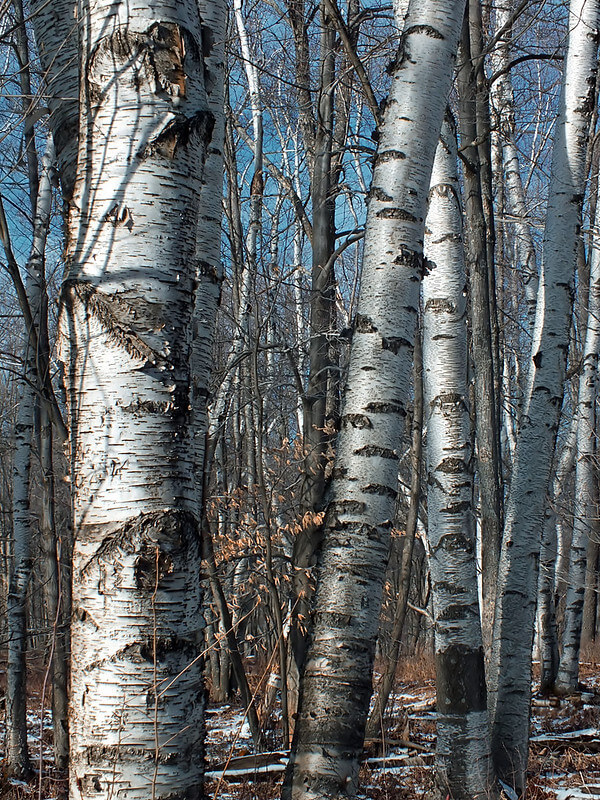
Medicinal Benefits of Paper Birch
As the scientific name Betula implies, paper birch trees have a compound found in terpene called betulin. Betulin is found in birch trees, regardless of species. Ensure the genus is “Betula” if you have doubts about the tree. Betulin acts as an anti-inflammatory and pain reliever. It has been used to treat arthritis. It has also been successful in lowering high cholesterol and helping with the edemas of the kidney and heart.
Interestingly, betulin has also been a helpful agent for diabetics, as it helps with glucose absorption and uptake, insulin secretion, and diabetic vascular dysfunction. With these qualities, it is an excellent digestive aid.
When betulin is used in tinctures or essential oils, it can treat skin eruptions and eczema. In fact, betulin has been used in folk medicine to treat skin conditions for centuries as it promotes wound healing. You can find this compound in many serums and cosmetic creams today. Most people have learned it is helpful to brew leaves/twigs/bark in a tea and rinse affected skin areas with it.
Betulin has also been found to mobilize and enhance the body’s natural antioxidants. It has strong antimicrobial and antifungal properties, plus antiviral potential. With the combination of all these, it has been used as a kidney stone preventative. Likewise, this compound has shown promising results in anticancer treatments.
Fun fact: Chaga, a parasitic fungus that grows almost exclusively on birch trees has even better results in anticancer treatments. This makes sense, as the fungus leaches nutrients (and betulin) from the birch and concentrates them inside the fungal body. Essentially, the most medicinal benefits of paper birch (or all birch) are mobilized inside the chaga conk.
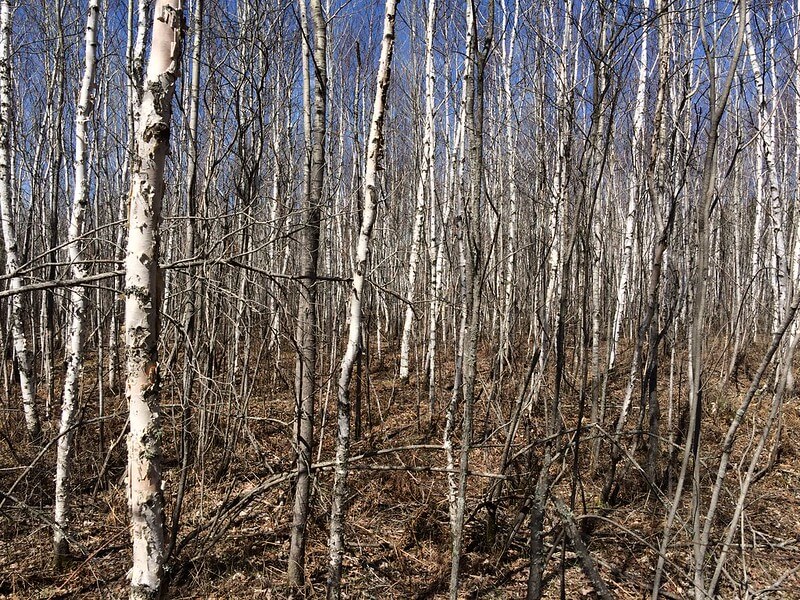
Many people prefer to extract the medicinals of paper birch by steeping it in vinegar. Some have said the resulting mixture is an excellent salad dressing. Likewise, the bitter tonic that is created from this acts as a stimulant for the digestive system.
Another medicinal benefit from this tree is easily accessible. If you rub your hand against the outside of a smooth section of the white bark, you will come away with a white powder on your hand. This white powder can actually be used as sunscreen. Just rub the tree, apply the powder, and you’re protected from the sun.
An intriguing story of birch trees, and the helpfulness of birch, follows below.
The Magic of Birch
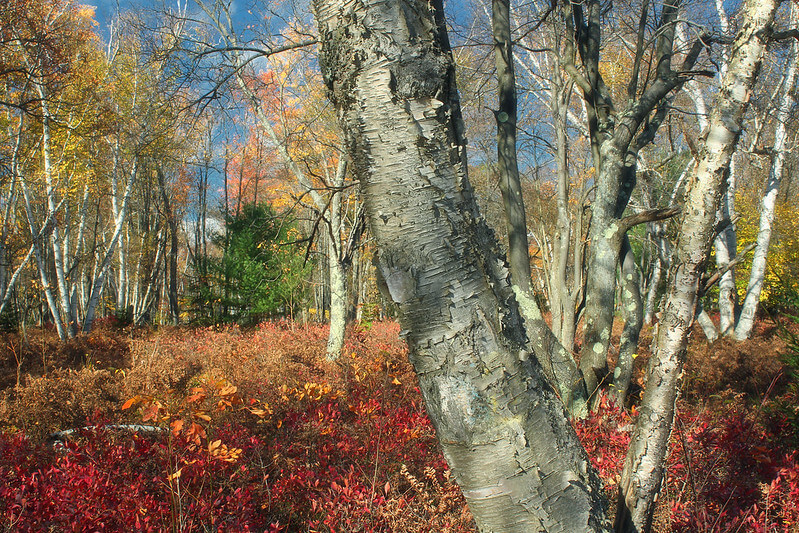
Long, long ago on an early winter day an old, old herb woman died and was buried in the forest outside the village by her old, old woman friends. The woman’s daughter, Eloise, who had left the village many years before to see something of the world, returned upon hearing of her mother’s death. In her grief, the daughter walked the path into the forest in search of her mother’s grave. A familiar voice called from the distance, “Eloise!” Eloise peered through the trees toward the voice and saw a crescent moon setting over a ring of birch trees shimmering ghostly in the glow and rushed into the middle of the grove.
In the middle of the grove, a circle of birch bark floated on a pool of water. Eloise knelt on the soft mossy bank and gazed into the water within the birch ring. There she saw her mother’s smiling face. “Oh Mother,” Eloise cried, “I’ve missed you so!”
Her mother replied, “Eloise, my daughter, when I died, I was buried here within this grove and became a birch tree as have all the wise women before me. Look behind you to see me as I am today.”
Eloise turned to see a birch tree wave her branches gracefully though there was no wind. Eloise ran crying to her mother and sank to the forest floor, leaning against the smooth bark of the tree.
Her mother began to speak soothingly to Eloise the magic of the birch tree. “I am the tree of beginning and birth. I bring protection for all. Pots, dishes, and cups made from my wood never empty of food and drink. I am the tree of the first new moon every lunar year. I am Beth, the Lady of the Woods.”
“Mother,” Eloise implored, “What can be done for me? I am alone and have no child to love and cherish.” Beth looked lovingly upon her daughter and lowered her branches to hold Eloise safe and warm. “Take one of my branches, daughter, to our cottage and with it fashion a cradle. Build a fire in the hearth with the chips and scraps and place the cradle near the fire. Lie then down upon the hearth rug to sleep and we shall see what we shall see.”
Eloise returned home and did all her mother told her. When she woke in the morning, her belly began to swell, her breasts became full and tender. By and by, a baby was born to Eloise, a daughter, whom she named Samara. Samara brought great joy to Eloise and grew in the knowledge of the forest plants and animals.
Eloise and Samara returned to the birch grove many times for the comfort and abundant gifts the mother birch tree bestowed upon them. Eloise and Samara gathered sap — the blood of the trees — every late winter to boil down for mineral rich syrup. The roof of their tiny cottage was well shingled with birch bark. They gathered the leaves in spring and summer to steep in vinegar and drink as tea. Samara delighted in making new birch brooms from twigs bound around a stout branch.
Many years passed. Samara grew into a strong and self-reliant woman. Eloise grew old and, as happens to us all, died and was buried next to her mother in the birch tree grove. In her grief, Samara walked the well-worn path to the birch grove seeking comfort and solace. A familiar voice called to her. Her mother’s voice: “Samara.”

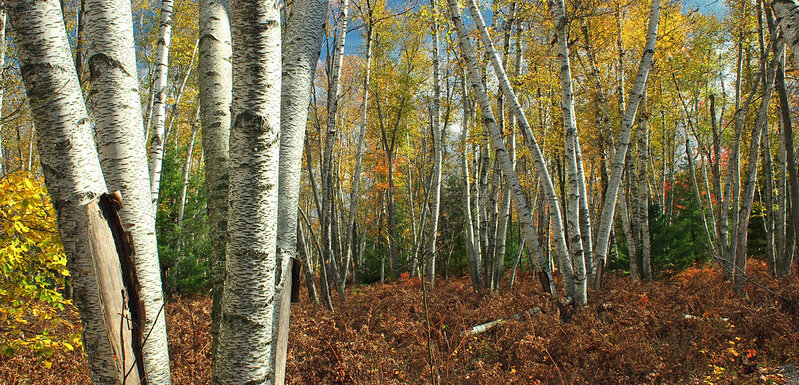







































This is a great article and very well written. My hat is off to Elizabeth Buttram.
Due to my specialization I have worked in a number of different places around the globe over the years, one of them being Belarus. And yes I went to Chernobyl before it became a tourist attraction, but it was part of my work – dealing with building houses over radioactive soil.
But I digress. I am intrigued with this article as one evening while there I was watching a Belarusian television program at my hotel room and I had no idea what they were talking about. It was like a Russian version of a PBS documentary. What I did figure out was they were interviewing rural farmers and others who were tapping birch trees and making syrup like we do here in North America with maple trees. I had never heard of this before.
In the past couple of years I have been trying to learn what I can about harvesting food and nutrition from our forests, especially pine trees and birch trees and everything they seem to be able to provide.
I am wondering Elizabeth, if you read this, do you have anything written on pine needles and bark, pollen, and how maple syrup compares to birch syrup in terms of nutritional profiles. I’ve only recently been ramping up on chaga which of course you touched on here. I’d love to host some seminars specializing specifically on potential health benefits of what I would call boreal forest medicine man – and woman – teas, syrups, tinctures, oils and salves etc.
Anyway I am now a huge fan of yours as well as Kane and this website in general. I hope I can contribute in a meaningful way in the coming months!
Howdy! It’s nice to read this from you, thanks for reaching out.
Interesting idea, comparing the nutritional values of maple vs. birch, and incorporating research on pine in general. I’ll look into this!
I wrote another article covering the nutritional benefits of Chaga, have you checked this out?
Thanks for the idea!